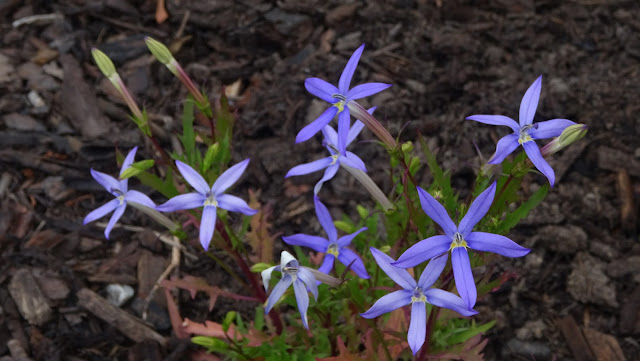Isotoma axillaris can be easily propagated from seed. Seed can be scattered directly in late winter, when there is no more danger of frost, or planted into pots and then transplanting in spring. Plants will require regular watering until established, and then only need watering about once a week, perhaps more in the heat.
Propagation from firm cuttings is also possible, but it is recommended that gloves be worn to avoid reactions to the sap. These warnings about the sap should not deter gardeners from planting these species as long as appropriate precautions are taken, as they give lasting flower displays in return for very little work. Also, the sap seems to be equally distasteful to potential herbivores. The plantings in the Australian National Botanic Gardens show no evidence of herbivory by either marsupials or insects.
This species can flower as early as September, right through to May and the flowers have a slight fragrance. The foliage will then die off and should be cut back to encourage fresh new growth. They are somewhat frost sensitive, but can be treated as annuals in cold climates. Although not essential, liquid fertiliser can be applied to encourage more abundant flowering.
This post is part of the Floral Friday Fotos meme.


Captivating 'eyes' in the middle of the flower!
ReplyDeleteVery pretty, like the color
ReplyDelete